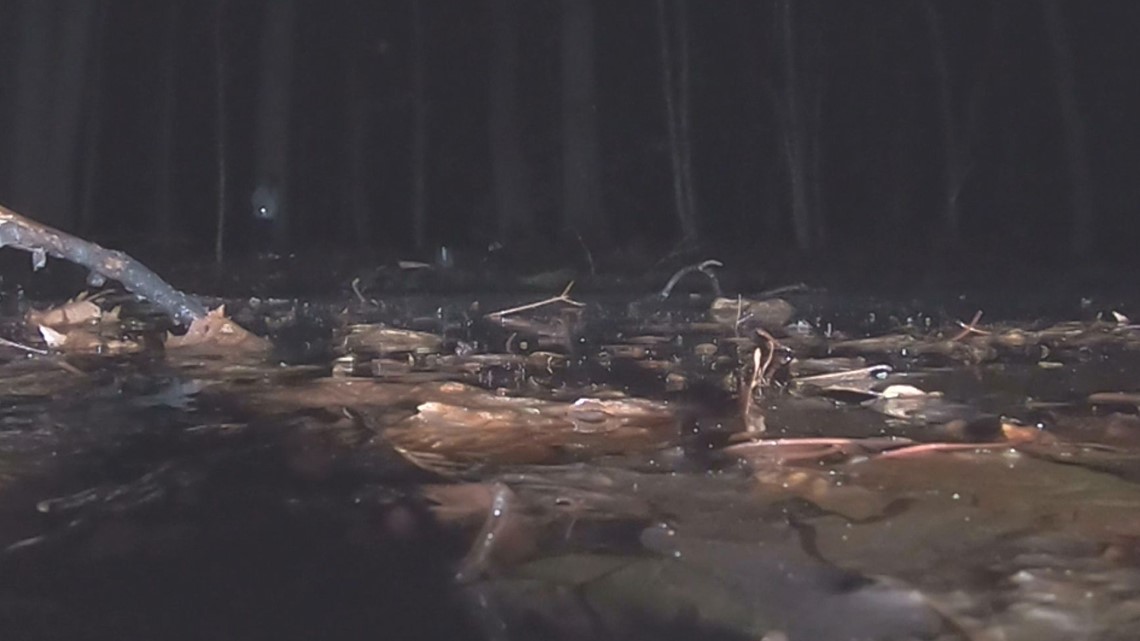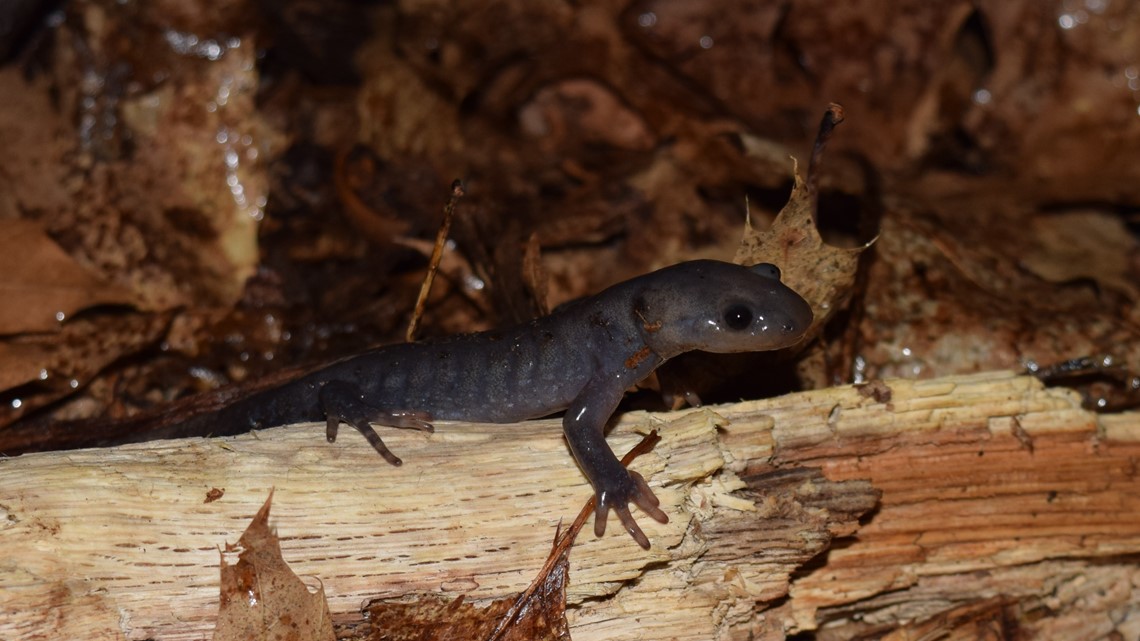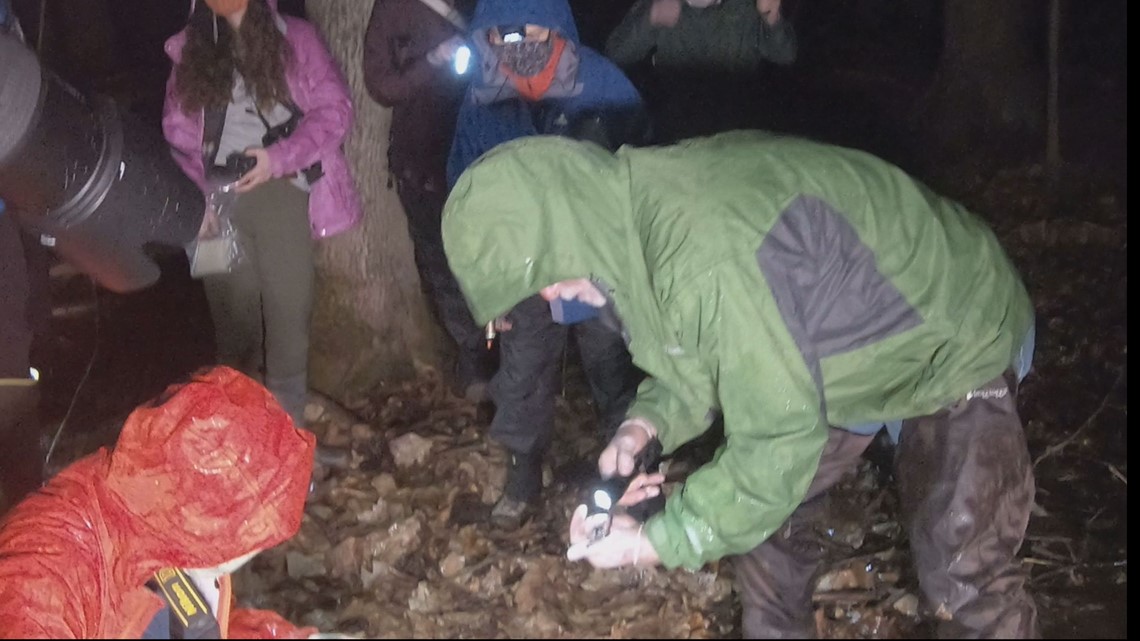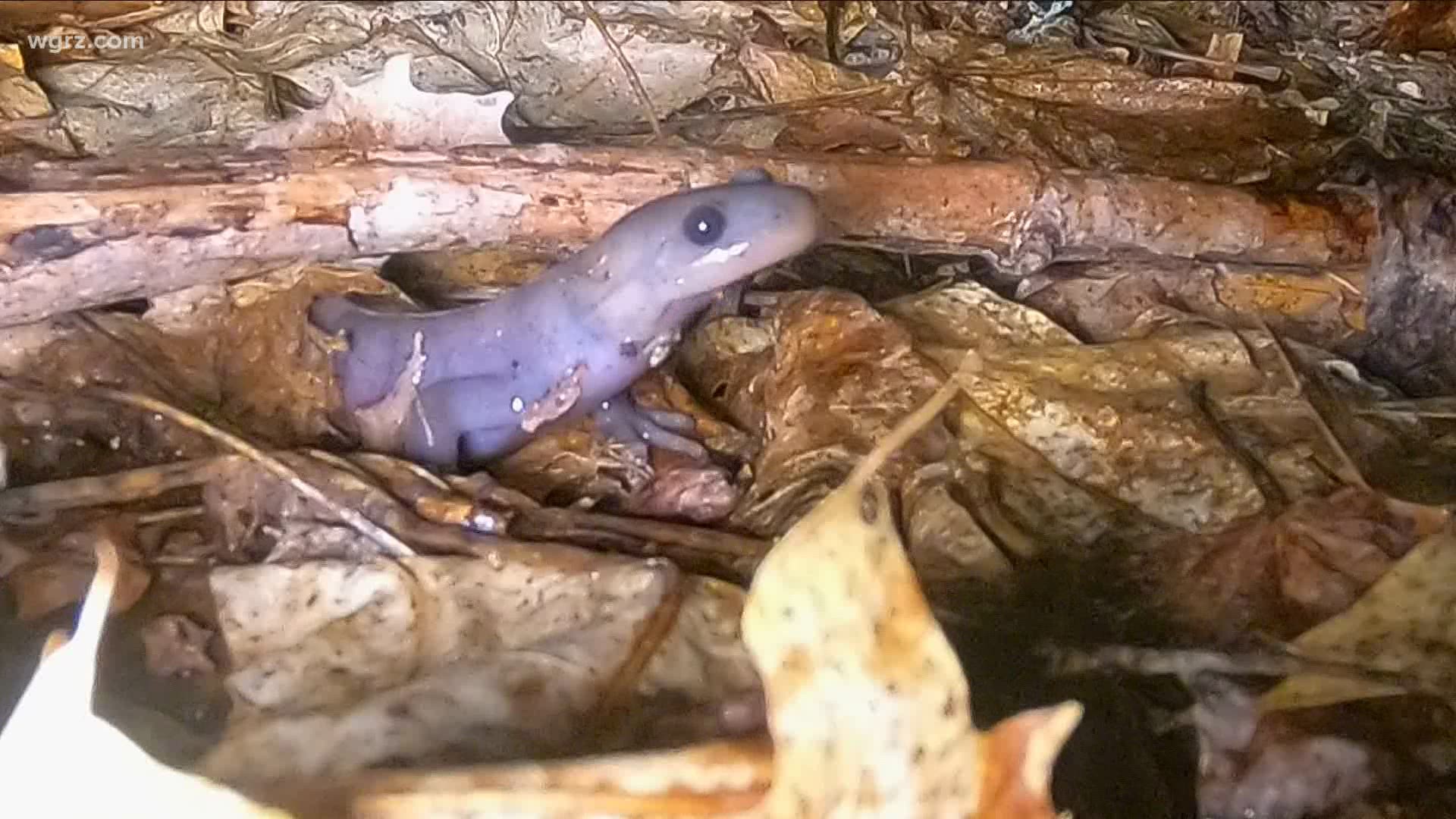COLLINS, N.Y. — Sometimes the smallest of habitats can support an abundance of thriving life.
Vernal pools are a spring phenomenon essential to many species, including salamanders. The pools are brought to life each year by winter's thawing snow and spring's renewing rain.
"The definition of a vernal pool is ephemeral water pool," said Ken Roblee, a retired DEC wildlife biologist. "The vernal pools, many of them will dry up by July or August."
Before they disappear, the pools can be teeming with life. One of spring's most fascinating displays is the annual salamander breeding migration.
"They're under the ground's surface during the winter months, presumably below the frost line," Roblee said. "Once we lose the snow cover in the woodlands, and we get our first spring rain or late winter rain, they emerge to start this migration."


The amphibians then head to vernal pools to breed, which often can occur in only one night, after which the male salamanders return to their home territory.
"Then the females stay in the pond for one or more days, and begin to lay the egg masses that will result in larval salamanders within a few weeks," Roblee said.
Salamanders often need to travel a long way to get to these pools, up to a mile away in some instances. Unfortunately, man made barriers are often a fatal hindrance to the salamanders.
"We get a lot of road mortality if the roads that they're crossing are heavily used," Roblee said.


Which makes it all the more important to preserve secluded habitats. Alexander Preserve in the Southern Tier is where these salamanders were observed. It's a perfect environment, and it's one of many being protected by the Nature Sanctuary Society of WNY.
"It's so easy to damage these habitats," Roblee said. "Through purchase and protection we're attempting to preserve what diversity we have, for future generations to enjoy."
To learn more about the NSSWNY and their efforts to preserve valuable habitat, click here.
The NY DEC has an interesting page describing the migration. Click here to find out more.



